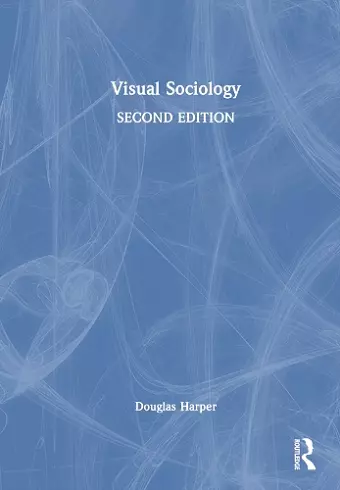Visual Sociology
Format:Hardback
Publisher:Taylor & Francis Ltd
Published:9th Jun '23
Currently unavailable, and unfortunately no date known when it will be back
This hardback is available in another edition too:
- Paperback£36.99(9781032171098)

This new version of the authoritative textbook in the field of visual sociology focuses on the key topics of documentary photography, visual ethnography, collaborative visual research, visual empiricism, the study of the visual symbol and teaching sociology visually. This updated and expanded edition includes nearly twice as many images and incorporates new in-depth case studies, drawing upon the author’s lifetime of pioneering research and teaching as well as the often neglected experiences of women and people of color.
The book examines how documentary photography can be useful to sociologists, both because of the topics examined by documentarians and as an example of how seeing is socially constructed. Harper describes the exclusion of women through much of the history of documentary photography and the distinctiveness of the female eye in recent documentary, a phenomenon he calls "the gendered lens". The author examines how a visual approach allows sociologists to study conventional topics differently, while offering new perspectives, topics and insights. For example, photography shows us how perspective itself affects what we see and know, how abstractions such as "ideal types" can be represented visually, how social change can be studied visually and how the study of symbols can lead us to interpret public art, architecture and person-made landscapes. There is an extended study of how images can lead to cooperative research and learning; how images can serve as bridges of understanding, blurring the lines between researcher and researched. The important topic of reflexivity is examined by close study of Harper’s own research experiences. Finally, the author focusses on teaching, offering templates for full courses, assignments and projects, and guides for teachers imagining how to approach visual sociology as a new practice.
This definitive yet accessible textbook will be indispensable to teachers, researchers and professionals with an interest in visual sociology, research methods, cultural theory and visual anthropology.
"At last, a book that brings back the joy of knowledge rooted in daily life, in the humanity of relationships. Douglas Harper enthralls us with an academically sound presentation in a beautifully flowing style that often refers to real-life moments to bounce off theory. A necessary boost for visual researchers and students."
Christine Dole-Louveau de la Guigneraye, Lecturer in Communication, Pierre Naville Center, University of Evry–Paris-Saclay, France
"Any good movie producer would have entitled this book, Visual Sociology: THE SEQUEL. The first edition was, and remains, an indispensable guide to anyone interested in learning about the variety and mechanics of visual social research. Doug Harper lays out in exhaustive detail the kinds of questions you can study with images of various sorts and then tells you how to go about completing a project.
In this new edition, however, the focus changes to a consideration of what it feels like to address the challenges of visual research as you’re doing it. Examining a selected number of the signature methods of visual social research – photo and video ethnography, photo elicitation, archival research, picturing the built environment, and photo voice, to mention a few – Harper zeroes in on case studies of his own and others’ work to demonstrate what’s involved in the enterprise. It’s all about managing your impressions, developing relationships, knowing your equipment, constant comparison and interpretation, being patient, and above all increasing your conceptual awareness of the world around you while respecting the people and worlds you encounter in your journey.
Visual social research is expanding dramatically and increasingly popular among students and teachers. But the excitement it generates also masks a dirty secret: that many are attracted to doing visual research because they think it is cool and fun and easy to do on the fly. Harper argues to the contrary that a more visual social science only increases the need for rigor that social research demands. Making pictures of people intensifies your relationships with them, deepens the complexity of your entry into their worlds, invites discussion and debate about your conclusions and all of this takes time and attention. Social scientists have long realized that there is a joy to working with, and studying, people and their doings. Doug Harper, who more than anyone else is responsible for having created a more visual sociology, reveals just how much the craft of visual discovery and analysis has to offer social scientific engagement."
John Grady, Professor Emeritus of Sociology, Wheaton College, USA
"Within the current digital transition, where filmic and photographic image is king, we are overwhelmed by a variety of images able to both deliver and contaminate information. Visual sociologist D. A. Harper, co-founder of the International Visual Sociology Association, has always been focusing academic attention on the visual lens as a method and a tool to grasp, analyse and understand visual messages and meanings of our times. His prestigious book, today published in an updated version, is in fact able to provide us with a decisive scientific contribution which, thanks to an engaging and compelling writing style, accompanies the reader into the complexity and value of images as data along the analogue-digital migration paths of our image society."
Piergiorgio Degli Esposti,Associate Professor of Sociology, University of Bologna, Italy
ISBN: 9781032171081
Dimensions: unknown
Weight: 784g
312 pages
2nd edition